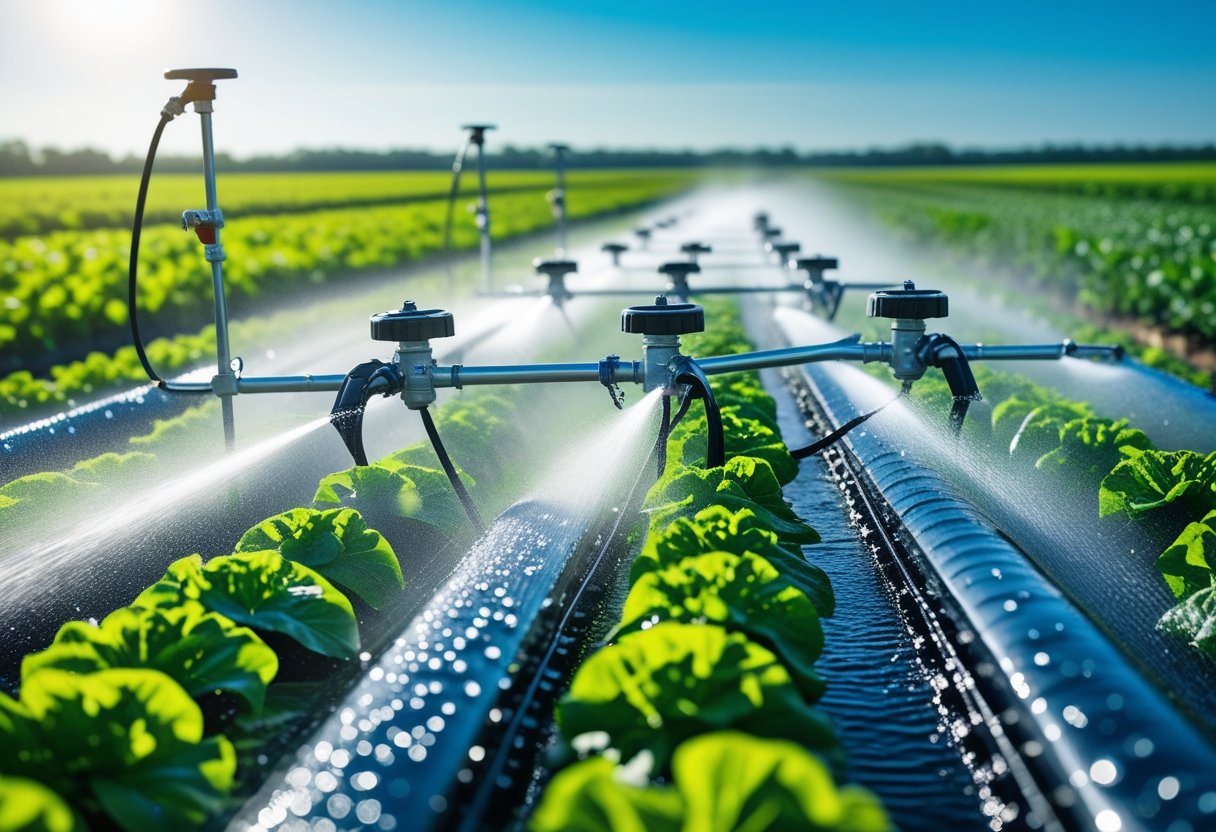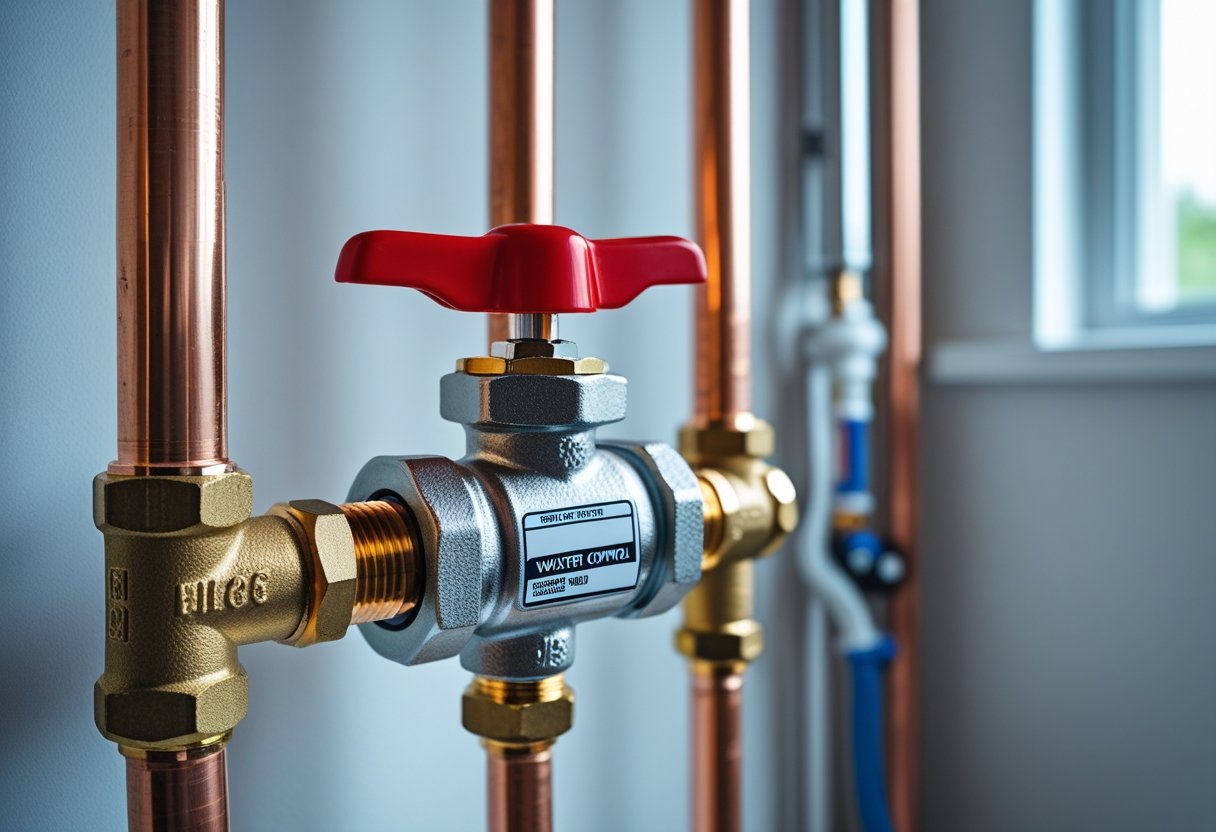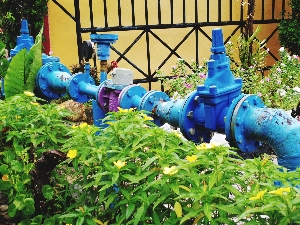Making sure your irrigation system lines up with local codes isn’t just about ticking boxes—it’s about keeping your water safe and steering clear of fines. One of the smartest moves? Install a proper backflow preventer and get it tested and maintained as your area requires. This device stops dirty water from sneaking back into your clean supply, which protects both your home and everyone else’s.
If you’re in San Diego County, the rules can feel a bit overwhelming at first. But working with certified technicians makes the whole process much less stressful. Pacific Backflow, for instance, handles backflow testing, repairs, and installations to keep your system safe and up to code.
Regular inspections and timely repairs really matter. Stay on top of maintenance, and you’ll avoid headaches down the road—not to mention, your irrigation should run smoothly all year.
Understanding Local Irrigation Codes
Getting familiar with irrigation system rules helps you protect your water and avoid those pesky fines. These regulations lay out the lingo, how the rules come about, and where to find the latest updates. Following them keeps your system safe and working as it should.
Key Terminology in Local Codes
Local irrigation codes toss around a lot of specific words. For example, a backflow preventer is simply a device that blocks dirty water from reversing into your clean water. A cross-connection is when clean and dirty water lines mingle—something codes strictly forbid. Annual testing means you (or your technician) check that backflow preventer every year to make sure it’s still up to the task.
Other terms pop up, like potable water (that’s just safe drinking water) and compliance (following the rules). Knowing this stuff helps you figure out what’s required and how to keep your system safe. Plus, it makes conversations with pros like Pacific Backflow a whole lot easier.
How Codes Are Established
Local governments or water districts set irrigation codes to protect water quality. They look at health risks and water safety, then decide what’s needed—like where to put backflow preventers and how often to test them.
These rules do change as new info or tech comes out. In places like San Diego County, you’ll need backflow devices on irrigation systems to prevent contamination. Keeping up with these codes helps protect your community and your own water supply.
Where to Find Current Regulations
You’ll usually find your local irrigation codes on your city or county government website. Water districts often post their own rules and testing schedules. If you’re not sure, a quick call or visit to your local water authority can clear things up.
Pacific Backflow keeps up with San Diego’s latest regulations, so using a trusted service makes meeting these rules a lot easier. You can always ask them for copies of code requirements or testing records.
Rules can change, so check local regulations every so often. Staying informed saves you time, helps you avoid expensive mistakes, and keeps your irrigation system safe.
Researching Your Local Requirements
To keep your irrigation system legal, you’ll need to know which local agencies handle water safety, what their specific guidelines are, and how state laws might come into play. This isn’t just about avoiding fines—it’s about keeping your water safe.
Identifying Jurisdictional Authorities
Start by figuring out which agencies oversee backflow prevention and water safety in your area. Usually, it’s your city’s water department or maybe the county environmental health office. These folks set the rules your irrigation system has to follow.
You’ll typically find their info online, or just call your local government office. In some places, only certified technicians can do inspections and testing. Knowing who’s in charge helps you get the right info and paperwork.
Consulting City and County Guidelines
City and county guidelines spell out which backflow preventers you need and how often you’ll need tests. Many places require annual inspections by certified techs to make sure everything works.
Your local water authority may even have checklists or training to help you out. When you go with a company like Pacific Backflow, they’ll handle testing and paperwork so you don’t have to stress.
State-Specific Compliance Factors
State laws sometimes add extra hoops for irrigation backflow systems. You might need specific device types or extra testing requirements beyond what locals want. Some states even want you to submit test results.
Take some time to look up your state’s water safety laws—they can be all over the map. Staying on top of these rules keeps your water supply safe and your system legal.
Designing an Irrigation System for Compliance
When you’re planning your irrigation system, every part has to meet your local water authority’s rules. That means using the right materials, respecting property boundaries, and including safety devices that protect your water. Details matter here—they’ll save you from fines and keep your water safe.
Selecting Approved Materials
Stick with approved materials if you want your system to last and stay safe. Pipes, valves, and fittings should match up with local plumbing codes. Usually, that means parts that can handle the outdoors and resist rust or corrosion. Plastic and metal are both common, but check if your area has rules about which types you can use.
The materials should also handle the water pressure and type in your system. Skip the bargain-bin brands—they might fail early or even contaminate your water. Certified suppliers give you parts that meet standards. Hang onto receipts or labels; inspectors sometimes want to see proof.
Adhering to Zoning and Property Boundaries
Don’t let your irrigation system wander over property lines unless it’s allowed. Cities often have zoning laws that say where you can put pipes and sprinklers. Knowing your property boundaries helps you avoid neighbor drama.
Some cities want you to keep irrigation a certain distance from sidewalks, streets, or neighboring lots. Check with your planning department for the specifics. Installing everything within your property—and away from utilities—protects you from fines and future headaches.
Backflow Prevention Standards
Backflow devices are your main defense against dirty water getting into your clean supply. Most codes require backflow prevention for irrigation systems. The right type depends on your system’s pressure and setup.
Regular testing and maintenance keep these devices working. Certified technicians, like the folks at Pacific Backflow, can handle inspections, tests, and repairs. They’ll make sure you’re following all San Diego County codes. Skip the backflow preventer, and you’re risking contamination—and fines.
Pressure Regulation Requirements
Your irrigation system needs to keep water pressure within a certain range. Too much pressure? You’ll blow pipes or wreck sprinklers. Too little, and coverage suffers. Many codes require pressure regulators.
Regulators keep things steady and protect your gear. Add pressure gauges so you can keep an eye on things. Your system design should match pressure ratings to prevent leaks or failures. If you’re not sure, Pacific Backflow can suggest pressure control options that fit local rules.
Obtaining Permits and Required Documentation
Before you break ground on your irrigation system, you’ll need the right permits and paperwork. That means applying for a permit, sharing system details, and setting up inspections. These steps keep your system legal and your water safe.
Permit Application Process
First up, fill out a permit application with your local water authority or city office. They’ll ask for info about your property and the type of irrigation you’re planning.
Get your project details in order—location, layout, materials, the works. Some places charge a fee when you apply. Be accurate; mistakes can slow things down.
You’ll likely need to show your system includes backflow prevention. If you’re lost, Pacific Backflow can walk you through what’s needed.
Documenting System Specifications
You’ll have to submit plans showing how your irrigation system is set up. That means diagrams of pipes, valves, sprinkler heads, and any backflow devices.
Specs have to match local codes. Show that your backflow preventer is the right type and in the right spot. This helps inspectors check things off during their visit.
Keep copies of everything. If you need repairs or upgrades later, you’ll want those records. Good documentation keeps things running smoothly.
Scheduling Inspections
After you submit your permit and plans, you’ll need to schedule an inspection before and after the install. The local water agency sends someone to check your system against your paperwork.
During the inspection, they’ll look for proper backflow prevention, correct pipe installation, and general safety. If something’s off, you’ll need to fix it before getting the green light.
Annual backflow testing is required in San Diego County. Pacific Backflow offers quick, reliable testing to keep you compliant. Scheduling inspections on time keeps your system legal and working right.
Installing Your Irrigation System Correctly
To keep your system running well and within the rules, it’s all about hiring skilled contractors, placing pipes right, and making sure key parts are easy to reach. These steps help prevent contamination and make maintenance a breeze.
Hiring Licensed Contractors
Go with licensed contractors for your install. They know the codes, use approved materials, and will set up backflow preventers properly.
Check their credentials and ask for references. Good contractors explain each step and make sure your system lines up with San Diego County rules. They’ll also handle permits and inspections, so you don’t get stuck with fines or fixes.
Hiring pros protects your investment. Pacific Backflow’s certified techs, for example, make sure everything meets code and works as it should.
Correct Pipe Placement
Where you put your pipes affects everything—how well your system works and whether it passes inspection. Pipes should be buried deep enough to avoid damage but not so deep they’re impossible to reach.
The main water line should always come before your backflow preventer. That keeps dirty water from sneaking back into your clean supply. Use certified materials meant for irrigation.
Don’t cross pipes with electrical lines; that’s asking for trouble. Label pipes so repairs and inspections are easier down the line. Good placement prevents leaks and keeps you legal.
Ensuring Accessibility for Inspection
Codes usually require you to keep key parts—like backflow preventers—easy to reach for testing and repairs. Put these devices somewhere they won’t get buried by plants or blocked by structures.
Easy access means you won’t miss annual backflow tests, which keep your water safe. Leave space around valves and control boxes for troubleshooting.
Pacific Backflow’s techs usually recommend putting backflow preventers where you can get to them without a hassle. It’s just easier for everyone.
Post-Installation Steps
After you’ve installed your irrigation backflow preventer, a few steps are left to make sure your system meets all local codes. You’ll need a thorough inspection, to handle any issues that come up, and to keep detailed records for compliance.
Final Inspection Procedures
Once your backflow preventer’s in, you’ll need a final inspection to check if everything’s up to code. The inspector checks placement, connections, and materials. Make sure your device is easy to access for testing and upkeep.
Have your paperwork ready—permits, specs, all of it. The inspector might test the preventer to make sure water can’t flow backward. If you pass, your system’s good to go.
Addressing Inspection Feedback
If the inspector points out issues, don’t wait to fix them. Common problems? Wrong parts, missing covers, or botched installation. You’ll get a list of fixes—handle them quickly to avoid fines or water contamination.
Work with a certified technician, like the folks at Pacific Backflow, to make repairs according to local rules. Afterward, you might need another inspection before your system is officially approved.
Maintaining Records for Compliance
Hang on to detailed records about your backflow preventer—when you installed it, inspections, tests, repairs, replacements, all of it. These documents come in handy for proving compliance and make scheduling annual testing way less stressful.
Just throw everything in a folder or make a digital file with:
- Installation certificates
- Inspection reports
- Testing dates and results
- Repair invoices
Keep those records up to date, and future inspections will go smoother. Pacific Backflow can even send your test reports straight to the local authorities, which honestly saves a headache and keeps your system in good standing.
Updating and Maintaining Your System
If you want to keep your irrigation system compliant, you’ve got to stay on top of maintenance and updates. Local codes change, and sometimes you need to swap out parts or tweak the setup to keep things legal and safe.
Handling System Modifications
Whenever you upgrade or tweak your irrigation system, double-check that new parts fit with what you already have. Stick to certified, high-quality equipment that matches your backflow preventer’s model.
Don’t forget—get any permits or approvals from your water authority before starting. Skipping this step can lead to annoying delays or even fines.
Log every modification: jot down dates, the parts you used, and who did the work.
Not sure where to start? It’s usually a good idea to bring in pros for repairs or upgrades. Pacific Backflow’s expert technicians know how to keep your system running right and out of trouble with the law.
Staying Updated on Regulation Changes
Regulations seem to change all the time, don’t they? Make a habit of checking in with your local water agency for any new rules or testing requirements.
Most places want certified pros to test backflow devices every year. Pacific Backflow can handle the testing and submit the reports for you.
Set reminders for annual inspections and regular cleanings—monthly filter and strainer checks are a smart move to prevent breakdowns.
Being proactive with regulations keeps your water supply safe and helps you dodge fines. Honestly, it’ll save you time and money down the road.
Common Mistakes to Avoid
Plenty of folks trip up by ignoring local code requirements. Every area has its own rules for backflow prevention, and skipping them can mean fines—or worse, unsafe water.
Another biggie is skipping annual backflow testing. Certified techs need to check these every year in lots of places. If you put off testing, you might miss leaks or other issues.
Don’t use the wrong backflow preventer or mismatched parts. Everything needs to fit your system and meet local standards. Using the wrong stuff can damage your system or get you in trouble.
People also forget to maintain and inspect their backflow devices. Dirt, corrosion, or just plain wear and tear can mess up your protection. Regular inspections and quick repairs keep things running right.
Some try to bypass testing rules when not using irrigation. Even if you barely water your lawn, you still have to meet testing laws if your system’s hooked to your plumbing.
DIY repairs can be tempting, but backflow issues get complicated fast. If you’re not sure, call a professional like Pacific Backflow—they know the local codes and how to keep everything safe.
Here’s a quick checklist to dodge the most common pitfalls:
MistakeWhat to Do Instead Not following local codesAlways check and follow your area's rulesSkipping annual testsSchedule testing yearly with certified prosUsing incompatible partsUse only approved, high-quality componentsNeglecting device maintenanceInspect regularly and fix problems promptlyIgnoring testing laws when offTest regardless of irrigation system use
Keeping up with these basics protects your water and keeps your system legal. Pacific Backflow can take care of testing and repairs so you don’t have to stress.
Frequently Asked Questions
You’re expected to use backflow preventers, maintain your system, and monitor your water use to stay compliant. Knowing what permits you need and how to install things safely makes your irrigation setup more efficient and, honestly, less of a hassle.
What steps should I take to make my irrigation system comply with local regulations?
Start by installing a backflow preventer to keep your water supply safe. Use certified parts and follow your local plumbing codes. Inspect and test your system at least once a year to stay in good standing.
Hang on to records of inspections and repairs. In some places, you’ll need to report or test your backflow devices regularly.
Can you tell me how to use the EPA's WaterSense Water Budget tool for irrigation planning?
The WaterSense tool lets you figure out how much water your plants actually need. Plug in details like soil type, plant variety, and your local weather.
It’s a handy way to save water by matching your watering schedule to your climate.
How does the 30/30 rule improve the efficiency of drip irrigation systems?
The 30/30 rule? Water for 30 minutes, wait 30 minutes, then water again. This gives the soil time to soak up moisture.
It helps prevent runoff and makes sure your plants get enough water without overdoing it.
What are the best practices for maintaining an irrigation system to operate efficiently?
Give your system a checkup every year and after any big storms. Clean filters and fix leaks right away.
Make sure your backflow preventer’s working and swap out old parts if needed. Keep a record of all tests and repairs.
Do I need professional plumbing experience to install a residential irrigation system?
You can tackle basic irrigation on your own, but installing backflow preventers and staying within code usually calls for a licensed pro.
A professional will make sure your system’s safe and fully compliant with local rules.
What kind of permits might be required for installing an irrigation system in a residential area?
Before you set up or modify an irrigation system, you’ll probably need a permit. Usually, you can get details from your local water district or city office—though sometimes it feels like a maze of rules nobody warned you about.
Most permits focus on things like water use restrictions and require you to install backflow prevention devices. That’s how they keep the community’s water supply safe.
If you need help with testing or maintaining your backflow preventer, Pacific Backflow works throughout San Diego County. They’re known for fast, knowledgeable service and can help keep your setup within code.












